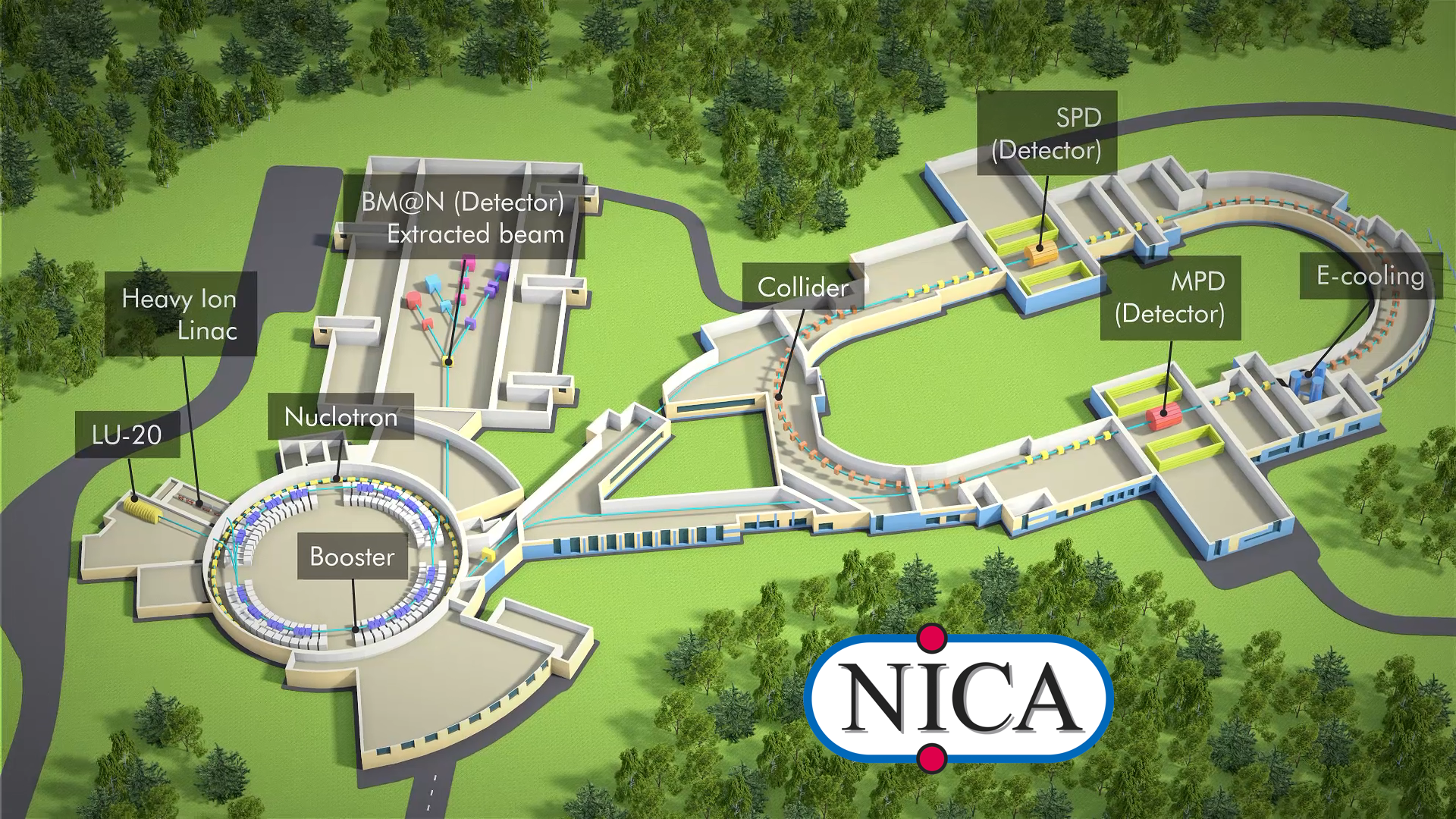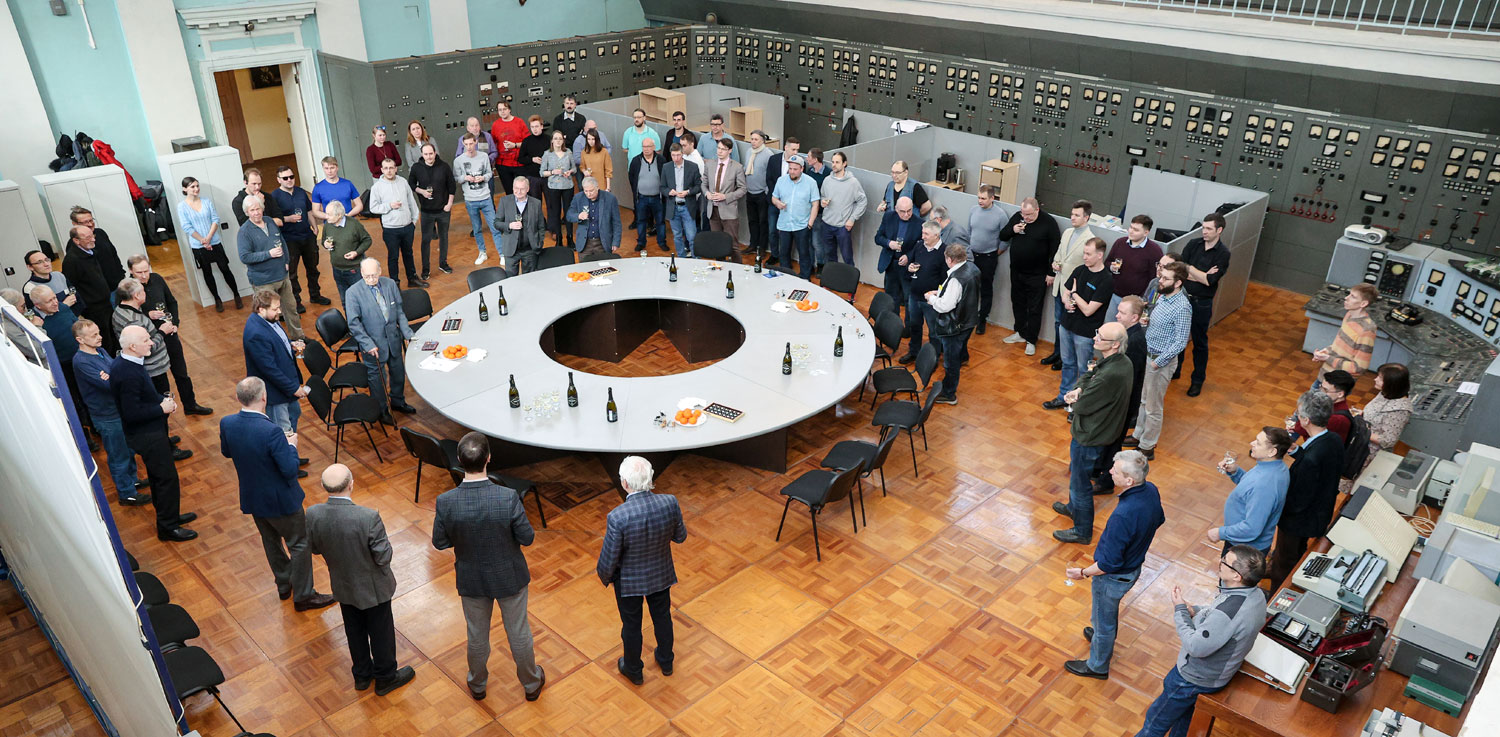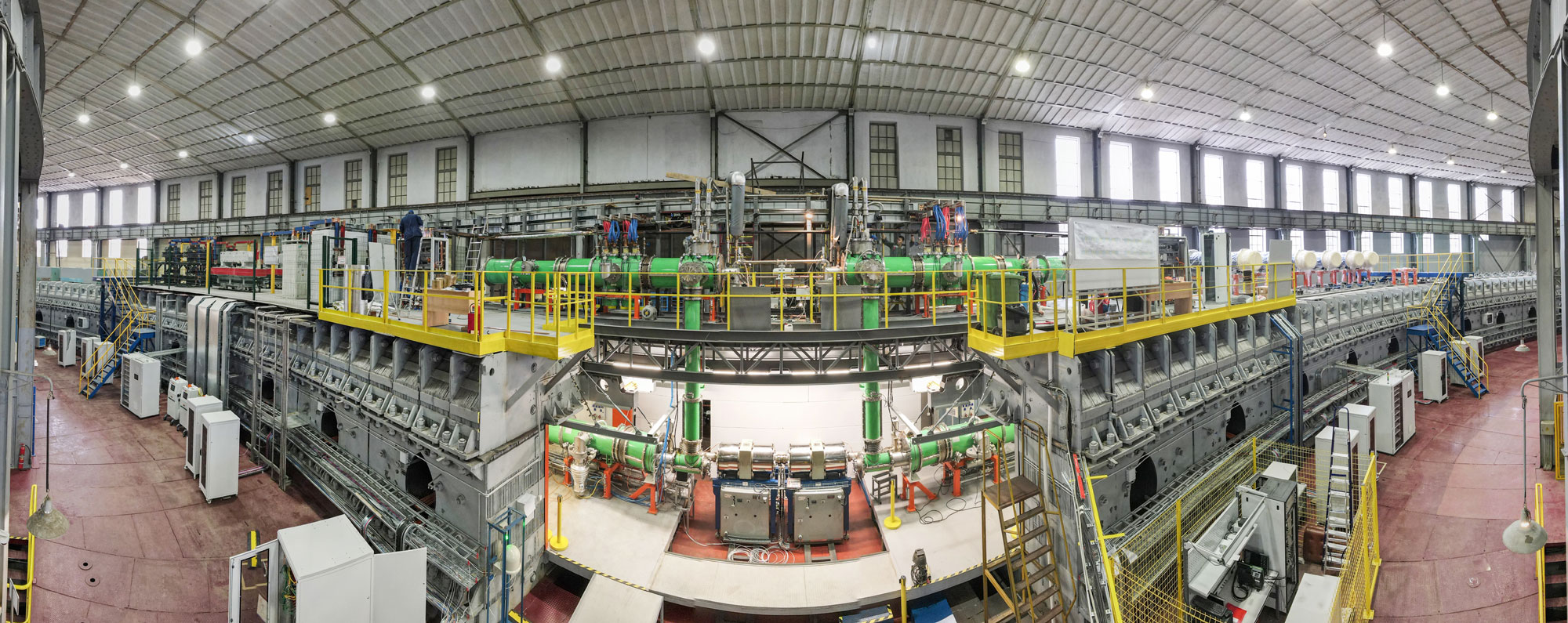NICA record-breaking run concluded
News, 06 April 2022
On the first day of April, the third commissioning cycle at the NICA injection complex was completed. The run has become the longest in the history of the complex. Scientists have managed to fulfil a wide range of technological tasks.
The aim of the current run was to test new installed equipment and ensure simultaneous operation of three major accelerators of the NICA complex: the Heavy-Ion Linear Accelerator (HILAC) and two superconducting cyclic accelerators, i.e. the Booster and the Nuclotron. An additional task was to check the upgraded power supply system of the extracted beam channel in long-term operation and test a new diagnostic system installed in the channel.
“The run has successfully concluded. It was the first run in which the entire accelerator system, except for the collider, operated. All the systems were debugged and a physical run was held: the SRC collaboration collected 185 million interactions of carbon with the hydrogen target. We expect to get very interesting, unique results this year,” JINR Vice-Director, Leader of the NICA project Vladimir Kekelidze commented on the event.
“It is difficult to overestimate the importance of the run and results obtained during the third commissioning cycle of the injection complex,” VBLHEP Deputy Director and Head of the commissioning cycle Andrey Butenko highlights. “For the first time, all elements of the complex have been launched and set up to work cohesively. It has required a full commitment from a large team of scientists and specialists during almost three months. It is noteworthy that the beginning of the run has been preceded by a huge volume of work on the assembly, installation, and testing of unique equipment from September until the end of 2021.”
Head of the Accelerator Department of the Laboratory of High Energy Physics JINR Anatoly Sidorin said that another challenge for the project’s team was that the modernisation of the cryogenic complex had not been completed yet. Nevertheless, all the tasks of the run were fulfilled. “One of the achieved goals of the run is stable simultaneous cooling of the Booster and the Nuclotron. For the first time in the history of the project, two superconducting accelerators operated together,” Anatoly Sidorin notes. “We have solved the tasks by connecting the cryogenic complex under a temporary scheme.” In addition, scientists managed to further optimise operation modes of the cryogenic complex.
It was planned that the third commissioning cycle would take two months – from the beginning of January to the end of February 2022. However, in order to fully complete the test cycle of all equipment, the run was extended until 1 April. A large amount of necessary equipment was installed, which was tested at the stand before the run. After its installation, it was tested at the accelerators. The run made it possible to implement these tests in real operating conditions. Power sources, pulsed sources, and other equipment was checked in the same mode. As a result of the test, scientists managed to find technical shortcomings in some systems. A part of them were eliminated during the commissioning cycle. To debug other shortcomings, specialists will draft a programme to further improve equipment, including within the next run scheduled for September 2022.
The run was conducted at carbon ions. The beam was accelerated in the linear accelerator. Its optimal injection into the Booster was configured, where the adiabatic capture of the beam was performed. It is a mode under which the transition from the circulation to the beam acceleration in the accelerator is carried out. In the Booster, the beam was accelerated and regrouped, and then accelerated again to the transfer site to the Nuclotron. The beam was stripped at the target at the entrance to the Booster-Nuclotron transportation channel. After that, specialists transported the beam through the channel. VBLHEP employees optimised the beam dynamics during the beam passage through the channel. In the Nuclotron, the beam was injected and captured. Then it was accelerated up to an energy of 3 GeV/n. This energy level is sufficient to test all the channel’s power supply systems and work for the physical experiment. The extraction channel with the new power supply system made it possible to ensure the beam stretching of more than six seconds.
When testing the systems of the extracted beam transportation channel, the beam was delivered to the BM@N facility for commissioning. A large volume of data at the SRC (Short Range Correlation) physical experiment was collected. Now, the international team of scientists involved in the experiment will process the data. Its volume exceeds for more than five times the data volume obtained during the previous SRC run.
The SRC experiment in the existing configuration has finished its work at the BM@N facility. Its equipment will be dismantled, and specialists will install equipment for the BM@N experiment. The next run of the NICA complex will not be a technological one. It will take place at the BM@N experiment with heavy-ion beams. To provide the heavy ion beam of krypton or xenon will be the task of the run. Scientists will discuss the choice of the ion type, since it is necessary to find out which type will ensure the greatest intensity from the source. Thus, the optimal operating mode of the accelerator complex will be provided.
In addition, in order to ensure work with a beam of heavy ions, it is necessary to install a specialised source of heavy ions, i.e. the krion at the linear accelerator, and adjust its operation to obtain the maximum luminosity of the beam. These two directions of preparations for the next run will take place in parallel and will last for at least three months.
Anatoly Sidorin noted that the formation of strong shifts of operators and shift managers had been a significant result of the third commissioning cycle. During all three months, the commissioning was carried out with highly professional supervision of the accelerator complex. So, it will be a good basis for training staff for the future operation of the NICA complex in the mode of up to 8,000 hours per year.


